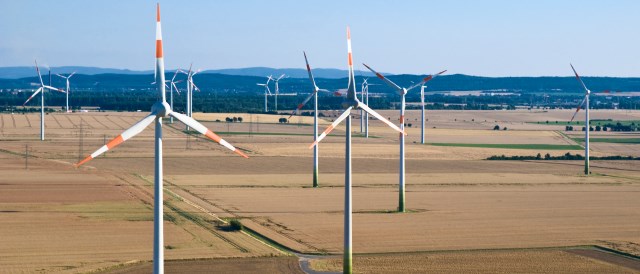Envisioned to help counterbalance the public relations might of the Big Four, the Renewable Energies Agency has become a valuable think tank in its own right, writes Paul Hockenos, US freelance journalist living in Berlin.

(Photo by Philip May, CC BY-SA 3.0)
The deeper one burrows into Germany’s epic energy transition, the more one realizes how extraordinarily diverse its many players are – and at how many different levels they operate. In addition to the highly visible government and political party actors, there’s a whole universe of NGOs, research institutes, foundations, lobby groups, and think tanks out there engaged in one way or another.
Take one of my favorites, the Berlin-based Renewable Energies Agency (REA). It’s a small, hybrid outfit that fits squarely into neither the category of think tank nor lobby group. It produces a prodigious volume of studies, books, pamphlets, videos, and other information – much of it translated into English – that explain (and promote) Germany’s transition to clean, decentralized power. Its young staff are bona fide experts who realize that if they want to get the complexities of the Energiewende across, they have to present their findings and arguments in an uncomplicated way – and with lots of pictures.
Their portal and its many graphics are a valuable fount of information for those curious about the energy transition. One recent study, for example, illustrated that Germany hasn’t come close to tapping its own potential for producing biomass, neither in terms of land available to grow biomass or the many types of plant life and refuse that can serve as biomass (instead of corn, corn, corn, which sadly is the case today.) The REA’s 100+-page “Atlas” goes through Germany region by region looking at bioenergetic potential.
The REA is also an excellent address for the latest statistics. Two years after the Fukushima disaster, for example, it did some brief stocktaking: In 2012, power generation from wind, solar, biomass, and co. increased 32 percent compared to 2010, a jump of more than 136 billion kilowatt hours (TWh). Germany’s gross electricity consumption fell by almost 3 percent to 595 billion kWh. In addition, Germany’s export surplus electricity surged from 5.4 billion kWh to 23.1 billion kWh. The graph below shows how the spurt in clean energy nearly compensates for the loss of nuclear (and when clean power production is combined with the drop in consumption, it fully compensates).
Like every one of the many Energiewende players in Germany, one must look at the fine print to learn who pays the bills – and maybe why they come to the conclusions they do. Vested interests are everywhere in the energy transition and they’re not always as transparent as the REA. The agency is backed by the federal ministries for environment and consumer protection, as well as over a hundred companies and associations involved in green energy and energy efficiency. It grew out of a 2005 campaign called “Germany has endless energy,” set in motion when the Social Democrats and Greens ruled the roost. The purpose of the campaign – and now the REA – was to counterbalance the immensely powerful fossil fuel and nuclear lobby. Its mandate is to underscore the advantages of a low-carbon power supply. This said, its research is fact- and evidence-based, and it’s not the voice of any one, narrowly defined interest group. I consider it an objective source of first-class information.
Way back in 2005, Germany’s “big four” power companies and their allies operated a multimillion-euro public relations effort that dwarfed those of a few dozen NGOs fighting for climate protection and clean energy. Now that’s no longer the case: In terms of muscle, the proponents of the energy transition are at eye level with its detractors. This is why the war of words over the Energiewende is so fierce at the moment. The REA is one constructive voice in the cacophony.
This post first was first published on https://ip-journal.dgap.org/en/blog/going-renewable/endless-energy-campaign-mainstream.